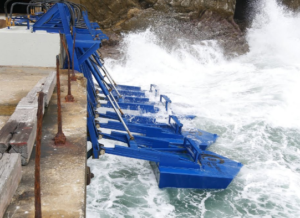Harnessing Ocean Currents: Research into Marine Energy Technologies
As the world transitions toward renewable energy, the vast potential of ocean currents remains an underutilized resource. Marine energy technologies, which harness the kinetic energy of ocean currents, waves, and tides, present an exciting frontier in clean energy innovation. This article explores the state of research in marine energy, its applications, and the challenges facing this burgeoning sector.
The Promise of Ocean Currents
Ocean currents are a consistent and predictable source of energy. Unlike solar and wind power, which are intermittent, marine energy offers a stable and reliable renewable energy supply. Key advantages of ocean current energy include:
- Predictability: Ocean currents follow well-understood patterns, making energy generation more predictable.
- Energy Density: Water’s higher density compared to air allows marine turbines to generate more power than wind turbines of the same size.
- Low Visual Impact: Submerged devices are less visually intrusive compared to wind or solar installations.
Marine Energy Technologies
- Tidal Turbines:
- Function: Similar to underwater wind turbines, these devices use the kinetic energy of tidal currents to generate electricity.
- Applications: Coastal regions with strong tidal flows, such as the Bay of Fundy in Canada, offer prime locations for tidal turbine deployment.
- Wave Energy Converters (WECs):
- Function: These devices capture energy from the motion of surface waves.
- Types: Point absorbers, oscillating water columns, and attenuators are examples of WEC designs.
- Applications: Offshore installations can supplement coastal power grids.
- Ocean Thermal Energy Conversion (OTEC):
- Function: Uses the temperature difference between warm surface water and cold deep water to generate electricity.
- Applications: Tropical regions where temperature gradients are significant.
- Marine Current Turbines:
- Function: These systems extract energy from large-scale ocean currents like the Gulf Stream.
- Applications: Providing steady energy for coastal areas.
Research Breakthroughs
- Advanced Materials:
- Development of corrosion-resistant and durable materials to withstand harsh marine environments.
- Hydrodynamic Modeling:
- Improved simulations enable optimal placement and design of devices for maximum efficiency.
- Energy Storage:
- Integration with advanced storage technologies, such as underwater compressed air systems, to address intermittency.
- Eco-Friendly Designs:
- Minimizing impacts on marine life through quieter, low-impact designs and wildlife monitoring systems.
Challenges in Marine Energy Development
- High Initial Costs:
- The design, deployment, and maintenance of marine energy devices are capital-intensive.
- Environmental Impact:
- Concerns about the potential disruption of marine ecosystems and navigation routes.
- Grid Integration:
- Transporting energy from offshore installations to onshore grids presents logistical and technical challenges.
- Technological Maturity:
- Many marine energy technologies are still in experimental or prototype stages.
- Policy and Regulation:
- The lack of clear regulatory frameworks hinders large-scale adoption.
Global Initiatives and Projects
- European Marine Energy Centre (EMEC):
- Based in Scotland, EMEC is a leading test site for wave and tidal energy technologies.
- MeyGen Project:
- A large-scale tidal energy project in Scotland’s Pentland Firth.
- United States DOE Programs:
- The U.S. Department of Energy supports research into marine energy through funding and partnerships.
- Japan’s Kairyu Project:
- Focused on harnessing the Kuroshio Current, one of the world’s strongest ocean currents.
The Future of Marine Energy
The future of marine energy lies in technological innovation, international collaboration, and supportive policy frameworks. Key areas of focus include:
- Scalability:
- Developing modular systems that can be scaled to meet varying energy demands.
- Hybrid Systems:
- Combining marine energy with other renewables like wind and solar for diversified energy portfolios.
- Decarbonization Goals:
- Marine energy’s role in helping nations achieve net-zero emissions by 2050.
- Marine Spatial Planning:
- Ensuring sustainable coexistence of marine energy projects with other ocean uses.
Conclusion
Harnessing ocean currents and other marine energy sources represents a critical step toward a sustainable energy future. Despite challenges, advancements in technology and growing investment in marine energy projects offer hope for widespread adoption. As research continues to unlock the potential of ocean currents, marine energy could play a pivotal role in addressing global energy needs while combating climate change.

Also Read :
